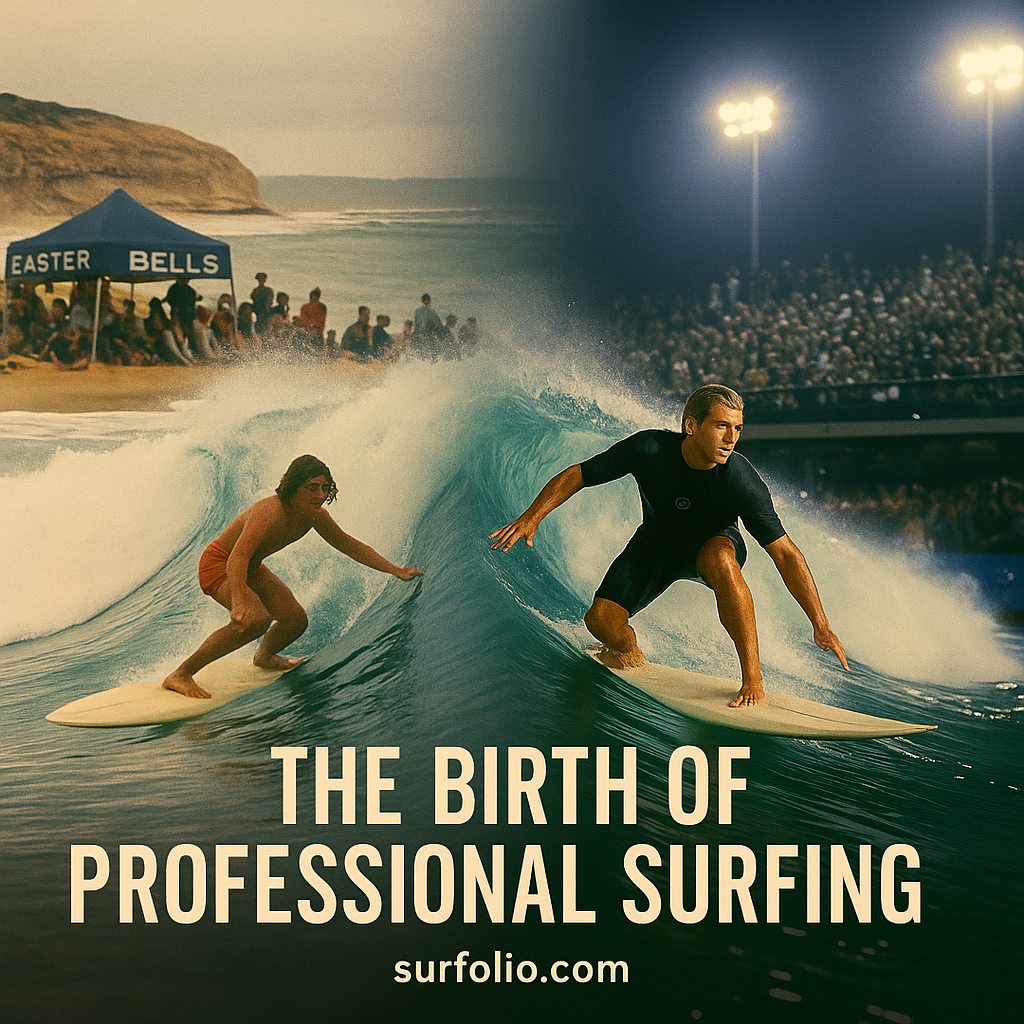
The Shift from Lifestyle to Sport
Surfing was once pure freedom — a counterculture pursuit defined by adventure, rebellion, and connection to nature. Through the mid-20th century, surfers traveled the world chasing waves with no trophies, sponsors, or prize money.
But as the sport grew in popularity, so did the idea of turning surfing into something more structured — a global competition that could celebrate skill while inspiring the next generation.
Early Surf Contests and the Rise of Rivalry
The seeds of professional surfing were planted in the late 1950s and early 1960s with small-scale contests in Hawaii, California, and Australia.
Key moments:
- 1954 Makaha International Surfing Championships – widely considered the first major organized surf competition.
- 1964 World Surfing Championships – held in Sydney, Australia, where Midget Farrelly became a household name.
- 1970s Australian contests – events like Bells Beach began drawing international surfers and media attention.
By the early 1970s, surfing had its first real rivalries — Nat Young, Shaun Tomson, Rabbit Bartholomew, and Mark Richards. These personalities and performances turned surfing into a spectator sport.
The 1970s: Birth of the Pro Tour
The defining moment came in 1976, when the International Professional Surfers (IPS) organization launched the first world tour. Founded by Fred Hemmings and Randy Rarick, the IPS created a calendar of contests stretching from Hawaii to South Africa.
For the first time, surfers could earn prize money and points toward a world title. Mark Richards, Wayne “Rabbit” Bartholomew, and Peter Townend became early champions who shaped what professionalism looked like in surfing.
The 1980s: Media, Money, and Mainstream Recognition
As television and surf magazines gained reach, the 1980s pushed surfing further into the mainstream. Corporate sponsors like Quiksilver, Billabong, and Rip Curl poured money into events, fueling the growth of a recognizable pro circuit.
This era also introduced the ASP (Association of Surfing Professionals), which replaced the IPS and formalized rankings, judging, and tour structures. With athletes like Tom Curren, Cheyne Horan, and Martin Potter dominating lineups, surfing became a legitimate global sport.
The 1990s: Global Expansion
By the 1990s, professional surfing was no longer confined to a handful of locations. The ASP World Tour spanned continents — from Hawaii and Australia to South Africa, Europe, and South America.
Advances in travel, surf forecasting, and equipment allowed surfers to chase perfect conditions year-round. The rise of stars like Kelly Slater and Lisa Andersen inspired a new generation and helped shape surfing into a lifestyle industry worth millions.
The Modern Era
Today, professional surfing is governed by the World Surf League (WSL), which evolved from the ASP in 2015. With digital broadcasts, equal prize money for women, and events held at the world’s most iconic breaks, the sport has achieved global respect.
Yet the core remains unchanged — surfers competing against nature and themselves in pursuit of the perfect wave.
The Cultural Impact
Professional surfing didn’t just create athletes; it created icons. It inspired films, fashion, music, and a worldwide tribe united by the ocean.
From the early days at Makaha to modern webcasts at Pipeline, professional surfing reflects both evolution and tradition — proof that competition and creativity can coexist in one of nature’s purest arenas.
Final Thoughts
The birth of professional surfing was more than a timeline of contests — it was a cultural shift. What began as a free-spirited pastime grew into a global movement that balances athleticism with artistry.
Today’s pros stand on the shoulders of the pioneers who paddled out before them, proving that surfing’s soul can thrive even on the world stage.
